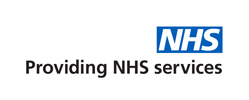Diabetes is a condition that causes a person’s blood sugar level to become too high.
There are 2 main types of diabetes:
- type 1 diabetes – a lifelong condition where the body’s immune system attacks and destroys the cells that produce insulin
- type 2 diabetes – where the body does not produce enough insulin, or the body’s cells do not react to insulin properly
Type 2 diabetes is far more common than type 1. In the UK, over 90% of all adults with diabetes have type 2.
High blood sugar that develops during pregnancy is known as gestational diabetes. It usually goes away after giving birth.
Non-diabetic hyperglycaemia (pre-diabetes)
Many people have blood sugar levels above the normal range, but not high enough to be diagnosed as having diabetes. This is known as non-diabetic hyperglycaemia, or pre-diabetes.
People with non-diabetic hyperglycaemia are at greater risk of developing type 2 diabetes, but the risk can be reduced through lifestyle changes.
If you have non-diabetic hyperglycaemia, you may be eligible for the NHS Diabetes Prevention Programme. The programme helps people make lasting lifestyle changes and has been shown to help prevent type 2 diabetes.
People with non-diabetic hyperglycaemia are also recommended to have a blood test every year to monitor their blood sugar levels.
It’s very important for diabetes to be diagnosed as early as possible because it’s likely to get worse if left untreated and can cause long-term health problems.
FOR MORE INFORMATION PLEASE CLICK ON THE LINK Diabetes – NHS (www.nhs.uk)


